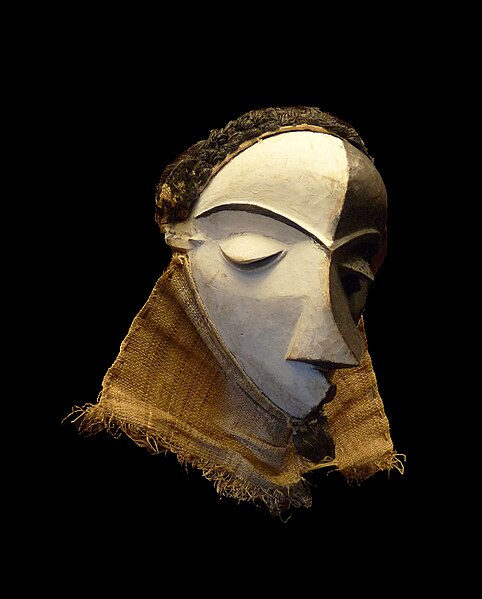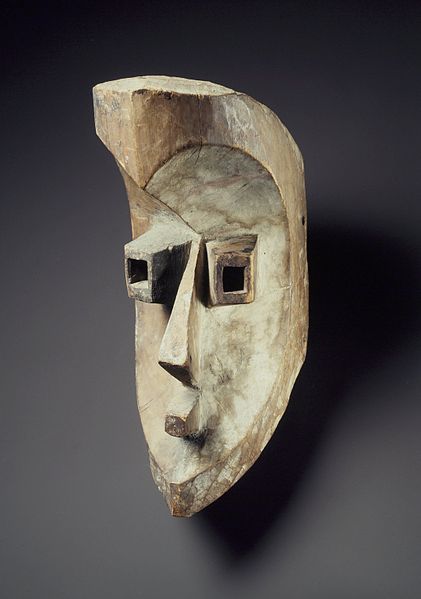Pablo Picasso, Les Demoiselles d’Avignon

Completed in the summer of 1907, Les Demoiselles d’Avignon was not exhibited in public until 1916. The painting represents five prostitutes in a brothel on the carrer d’Avinyo (“Avignon Street”) in Picasso’s native Barcelona. Extremely important to Picasso was the example of Cézanne, who, a year after his death in October 1906, was honored with a huge retrospective at the 1907 Salon d’Automne. Cézanne, Picasso would say, “is the father of us all.” In the way Picasso shows one object or figure from two different points of view, the compressed and concentrated space of Les Demoiselles is much like Cézanne’s in his Still Life with Plaster Cast.

Consider the still-life grouping of melon, pear, apple, and grapes in the center foreground. The viewer is clearly looking down at the corner of a table, at an angle completely inconsistent with the frontal view of the nude who is parting the curtain. And note the feet of the nude second from the left. Could she possibly be standing? Or is she, in fact, reclining, so that we see her from the same vantage point as the still life?
Picasso’s subject matter and ambiguous space were disturbing to viewers. Even more disturbing were the strange faces of the left-hand figure and two to the right. X-ray analysis confirms that originally all five of the figure shared the same facial features as the two in the middle left, with their almond eyes and noses drawn in an almost childlike profile. But sometime in May or June 1907, after he visited the ethnographic museum at the Palais du Trocadéro, across the river from the Eiffel Tower, Picasso painted over the faces of the figure at the left and the two on the right, giving them instead what most scholars agree are the characteristics of African masks. But equally important to Picasso’s creative process was a retrospective of Gauguin’s painting and sculpture at the 1906 Salon d’Automne with their Polynesian imagery. At any rate, Picasso’s intentions were clear. He wanted to connect his prostitutes to the seemingly authentic – and emotionally energizing – forces that Gauguin had discovered in the “primitive.”


Many years later, he described the meaning of African and Oceanic masks to Les Demoiselles:
“The masks weren’t just like any other pieces of sculpture. Not at all. They were magic things. . . . They were against everything – against unknown, threatening spirits. I understood; I too am against everything. I too believe that everything is unknown, that everything is an enemy! . . . [the masks] were used for the same thing. They were weapons. To help people avoid coming under the influence of spirits again, to help them become independent. They’re tools. If we give spirits a form, we become independent. . . . I understood why I was a painter. All alone in that awful museum with masks . . . Les Demoiselles d’Avignon must have come to me that very day, but not because of the forms; because it was my first exorcism painting – yes absolutely!”[1]
- Henry Sayre, The Humanities: Culture, Continuity and Change, vol. 2, 2nd ed. (Upper Saddle River, NJ: Pearson, 2015), 1121. ↵

